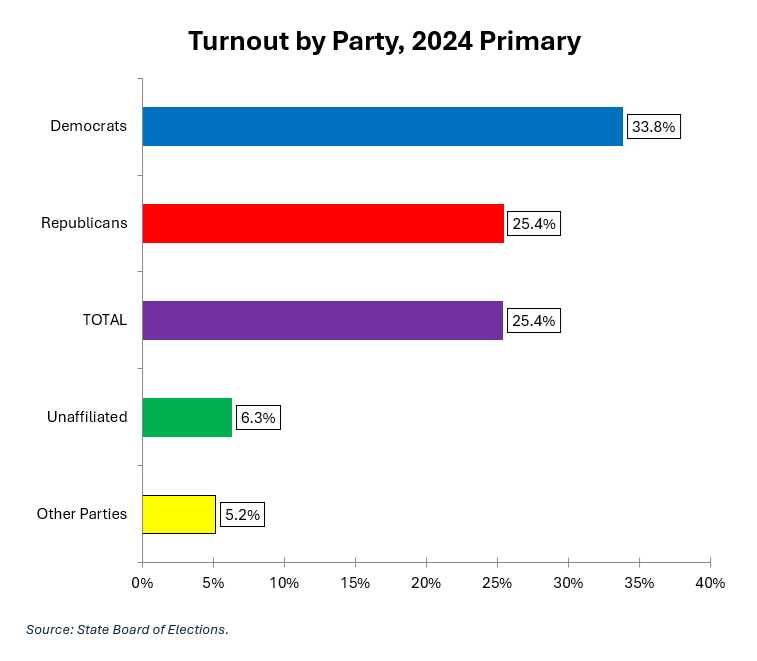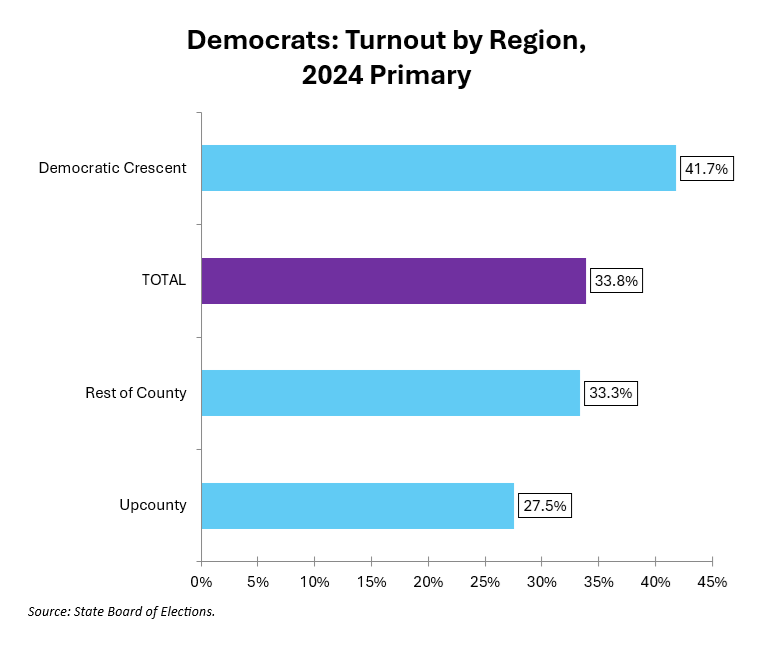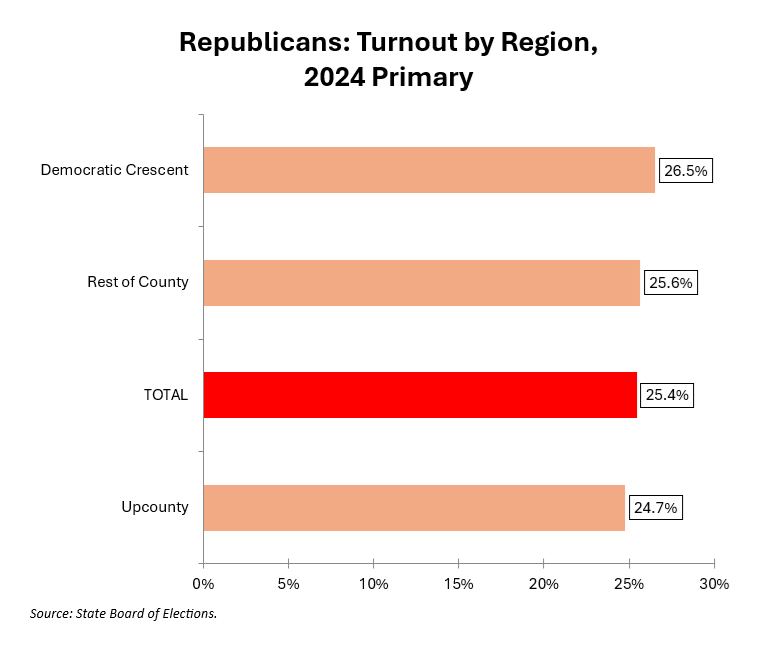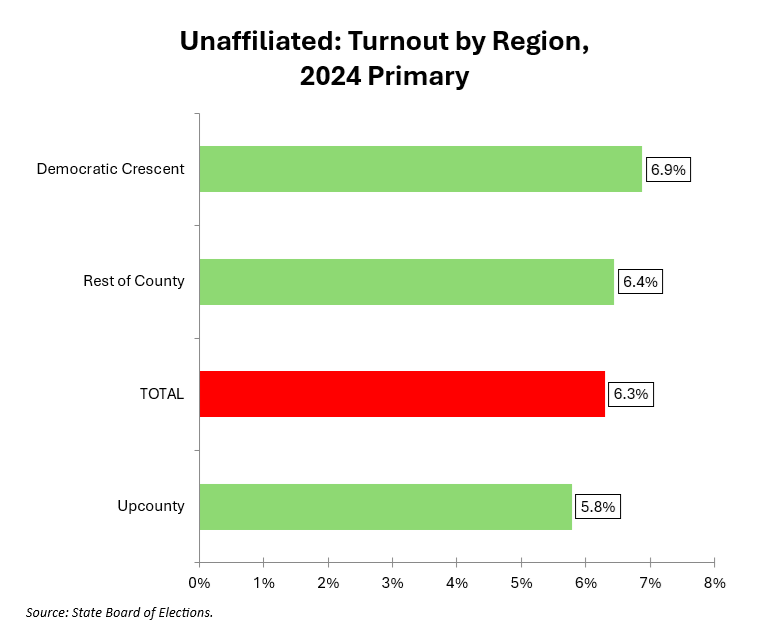By Adam Pagnucco.
Part One looked at voting mode by party in MoCo’s 2024 primary. Today we will study turnout rates by party and county region.
The chart below shows turnout rate by party in MoCo’s 2024 primary.

Nothing is unusual here, in particular the poor turnout of unaffiliated voters. Because Maryland has closed primaries, unaffiliated voters cannot vote in any party primaries. Check out this year’s ballot and you will see that unaffiliated voters could only vote for school board candidates in the primary. School board seats matter, but these candidates rarely have any money for outreach to voters, unaffiliated or otherwise. So of course, unaffiliated turnout is rock bottom and neither the Democrats nor the Republicans seem to care about that.
Now to county regions. I use three: the Democratic Crescent (the areas in and around the Beltway that sent Jamie Raskin to Congress), Upcounty (the areas north of Rockville and west of Potomac) and the rest of the county. For definitions, see my elections methodology post.
The chart below shows Democratic turnout by county region in the 2024 primary.

This pattern is one I have seen in every MoCo election I have studied: turnout is highest in the Democratic Crescent, lowest in Upcounty and average elsewhere. Just look at the vast spread between downcounty and the north.
This chart shows regional turnout for Republicans.

The regional turnout differences for Republicans are so minor that they are almost undetectable. Now let’s look at unaffiliated voters.

Again, while regional turnout differences are present, they are not as noticeable as they are for Democrats. A huge majority of unaffiliated voters did not vote in the 2024 primary regardless of where they live.
Why does this regional pattern prevail among Democrats much more so than among other voters? I don’t have data on which to judge, but here’s a theory: downcounty Democrats are much more plugged into national and international affairs and progressive politics than other Democrats, and tend to live in downcounty to obtain easier access to relevant jobs in D.C. This shapes both turnout and political culture. It’s not a coincidence that Downtown Silver Spring and Takoma Park, located near the D.C. border, both have above average turnouts and elect much more progressive politicians than are seen elsewhere in MoCo (or the rest of Maryland). These characteristics may not apply as much to non-Democrats.
Because there tend to not be robust regional turnout differences among Republicans and unaffiliated voters – at least not in the 2024 primary – the remainder of this series looks at Democrats. We will look at districts and local areas next.
